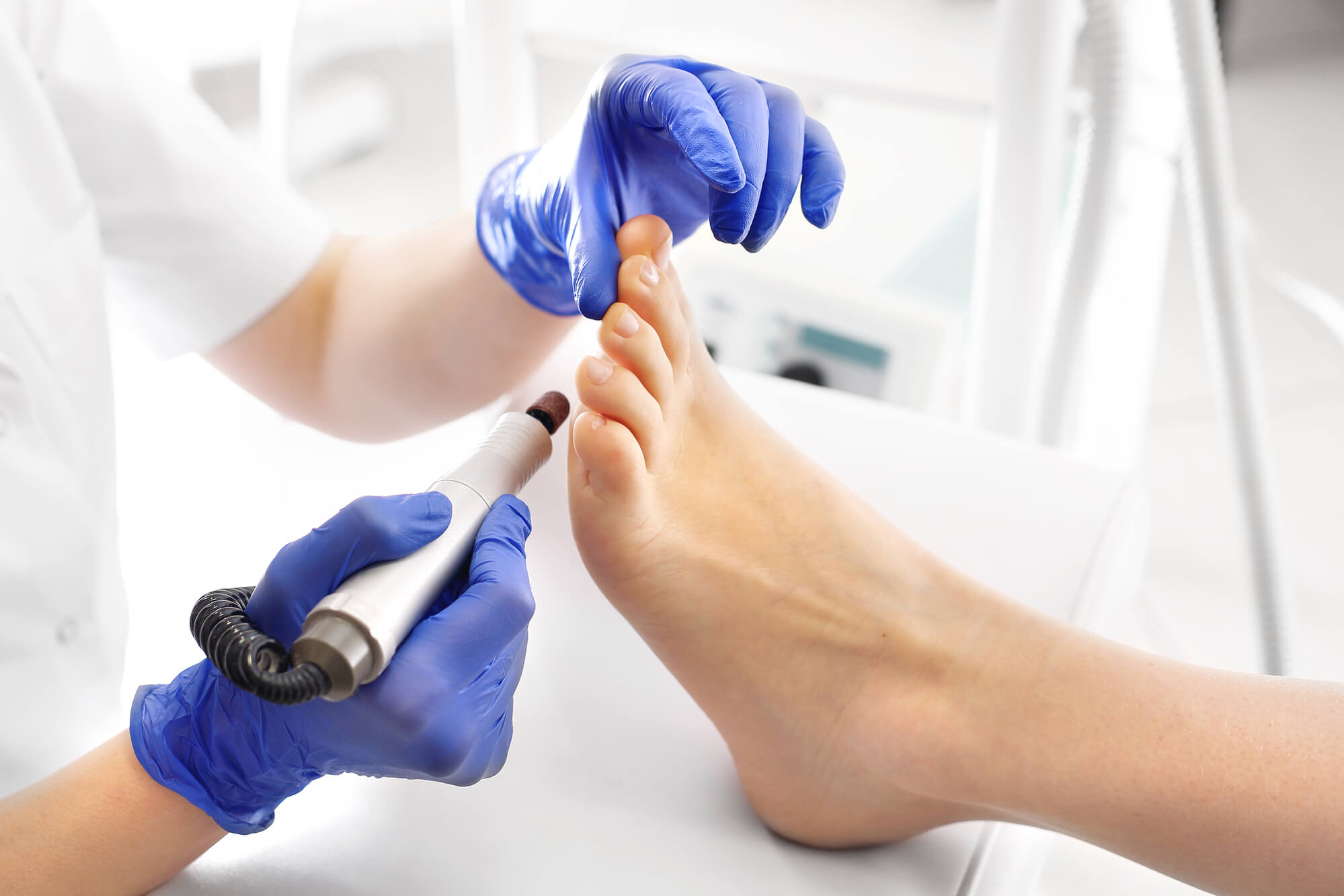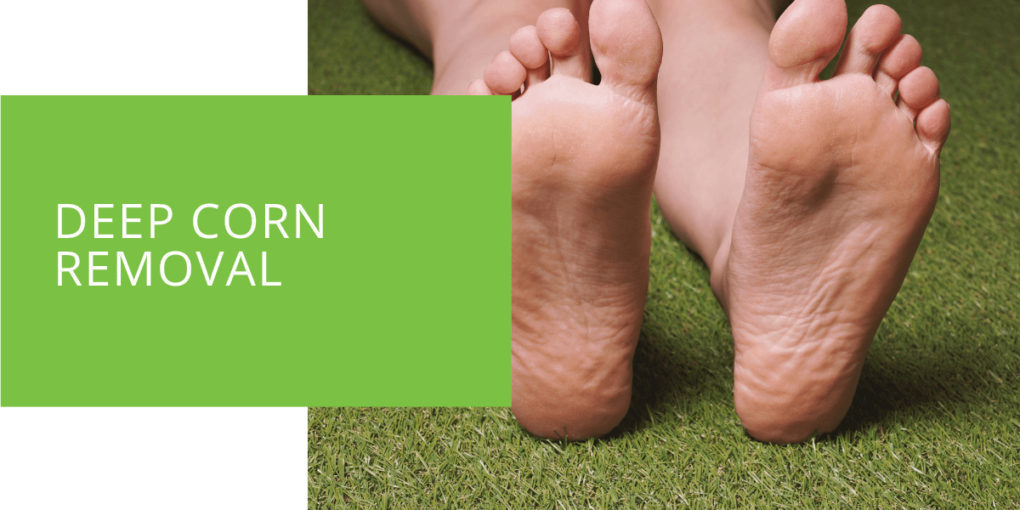Deep Corn Removal
Foot corn can be a painful and frustrating issue that significantly impacts your daily life. This comprehensive article will guide you through everything you need to know about foot corns, from their causes to the most effective treatment options available. We'll explore the root causes of foot corns and look at the most effective non-surgical remedies, including home treatments and over-the-counter solutions. We'll also look at the intricacies of deep corn removal surgery. Our goal is to empower you with the knowledge and tools you need to take control of your foot health and say goodbye to foot corn for good.
Key Takeaways
- Understanding the difference between corns and calluses and recognizing the various types of corns is crucial for effective treatment.
- Non-surgical options like over-the-counter remedies, home treatments, and proper footwear can relieve many individuals dealing with corns.
- In severe pain or recurrent corns, consulting a podiatrist and considering deep corn removal surgery may be the most effective solution for long-lasting relief and improved foot health.
Understanding Corns and Calluses
What Are Corns and Calluses?
Corns and calluses are common foot issues but are not interchangeable. Corns typically manifest as small, hardened areas of thickened skin that primarily form on or between the toes. Calluses, conversely, are larger and more prevalent, often appearing on the soles of the feet. Both are products of friction and pressure on the skin, typically stemming from ill-fitting shoes or repetitive movements.
Types of Corns
To effectively address corn-related concerns, it's essential to recognize the diverse types of corn, including soft, hard, and seed corn. Hard corns, scientifically called helomas, deserve particular attention due to their propensity to penetrate deeply into the skin, causing severe pain and discomfort.
Non-Surgical Corn Treatments
Over-the-Counter Remedies
When confronted with corn, accessible over-the-counter treatments offer potential relief. Corn pads and cushions, for instance, are valuable allies in the battle against foot corn. These soft cushioning pads can be strategically placed over the corn to minimize friction and pressure while facilitating the healing process.
Home Remedies
For those inclined toward natural remedies, various options exist to soften and eliminate corn at home. Soaking your feet in warm water, followed by the gentle application of a pumice stone to exfoliate the thickened skin, can be highly effective. Consistent moisturization of your feet can further help stave off the recurrence of corns.
Proper Footwear
One of the most fundamental aspects of corn prevention is the selection of suitable footwear. Ill-fitting shoes can be major contributors to corn development. It is advisable to consult with a podiatrist to ensure your shoes match your foot shape and activity level, thereby mitigating the risk of future corn-related issues.

The Need for Surgical Intervention
When to Consider Surgery
While non-surgical treatments serve as adequate solutions for many individuals, there exist instances where deep corn removal surgery becomes an imperative consideration. This becomes especially pertinent when a corn becomes excessively painful, recurrent, or when an underlying foot deformity is present. Seeking consultation with a podiatrist is the initial step to ascertain if surgery is the most suitable course of action.
Consulting a Podiatrist
When you grapple with persistent foot corns or calluses, the prudent course of action is to solicit the guidance of a medical professional. Podiatrists are adept at diagnosing and treating foot conditions, including deep corns. During your consultation, a podiatrist conducts a comprehensive assessment, encompassing an evaluation of your overall foot health, identifying underlying causes, and formulating a tailored treatment plan aligned with your specific needs.
Deep Corn Removal Surgery
The Surgical Procedure
In scenarios where surgery is deemed necessary, the podiatrist proceeds with deep corn removal surgery. This surgical undertaking entails using a scalpel wielded by a skilled surgeon to meticulously remove the thickened skin and any underlying lesions. The procedure is typically carried out under local anesthesia, ensuring minimal discomfort for the patient.
Recovery Process
Following surgery, a relatively swift recovery period ensues. Patients may be required to briefly minimize weight-bearing on the treated foot, with the podiatrist furnishing precise wound care instructions. Most individuals experience considerable relief from pain and discomfort post-surgery, marking a pivotal step toward improved foot health.
Finding a Podiatry Clinic
Choosing the Right Clinic
Selecting a reputable podiatry clinic is a crucial precursor to successful corn treatment. In your quest, prioritize clinics equipped with experienced podiatrists specializing in foot surgery and corn removal. Patient reviews and recommendations serve as valuable tools in making an informed decision.
Consultation and Diagnosis
Once you have pinpointed a suitable clinic, schedule a consultation to discuss your foot concerns. During this consultation, the podiatrist conducts a thorough examination, encompassing a comprehensive evaluation of your overall foot health. This includes assessing underlying conditions, such as diabetes, which can significantly impact corn treatment. This personalized evaluation forms the bedrock of a tailored treatment plan designed specifically for you.

Expert Advice and Personal Experience
Our podiatrists have a long history of diagnosing and treating various foot conditions, including deep corns, at their podiatry clinic. They understand the frustration and discomfort that foot corn can cause. Their team of skilled podiatrists has access to state-of-the-art equipment, allowing them to provide cutting-edge treatments that may include surgery when necessary. Their primary goal is to provide patients with long-lasting relief and improve the health of their feet.
Conclusion
Foot corns can constitute a persistent and painful problem, but effective treatments abound. Whether you choose non-surgical methods, such as corn pads and home remedies, or necessitate deep corn removal surgery, seeking professional help is paramount. As experts in the field, we stand ready to guide you on your journey toward corn-free, pain-free feet. Do not let foot corns hamper your mobility and comfort any longer. Schedule an appointment today and take the first step toward healthier feet.
With our comprehensive approach to foot care, you can rest assured that you are in capable hands. Your comfort and well-being rank as our highest priorities, and we remain dedicated to assisting you in achieving optimal foot health and overall well-being.
FAQ
How do you get rid of deep-rooted corns?
To eliminate deep-rooted corns, it's advisable to consult with a podiatrist. They can recommend non-surgical options such as corn pads, cushioning, or surgical intervention if necessary.
How long does it take to recover from deep corn removal surgery?
The recovery time after deep corn removal surgery is typically relatively quick. Most patients can expect to return to regular activities within a few weeks, though the exact timeline can vary depending on individual factors.
How deep can corn go?
Corns can penetrate quite deeply into the skin, causing significant discomfort. It's essential to address them promptly to prevent further complications.
Can I dig a corn out of my foot?
Attempting to remove a corn yourself can lead to infection and further complications. It's best to consult a podiatrist for safe and effective removal methods.
Can you remove the root of a corn?
During deep corn removal surgery, the podiatrist will aim to remove the entire corn, including any underlying lesion or root. This procedure ensures a more comprehensive and lasting solution to the problem.

